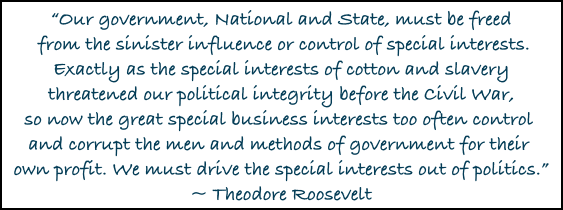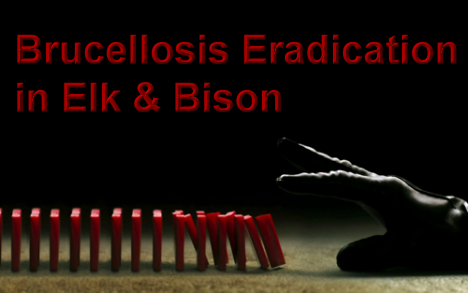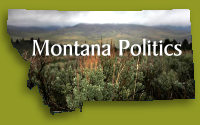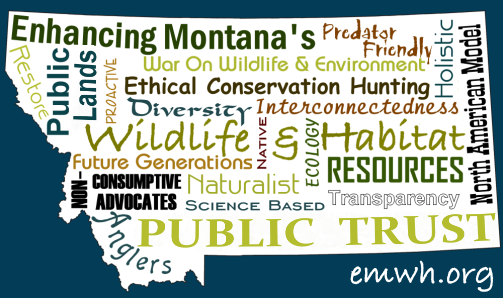
USDA APHIS Eradication of Brucellosis
in Wildlife Agenda
 Like
setting up an intricate domino effect, the USDA Animal & Plant
Health Inspection Services (APHIS) and APHIS
Veterinary Services (VS) has been on a mission,
recently ramped up, of eradication of brucellosis in the United
States, which includes the wildlife. The GYA wildlife, predominately
elk and bison, have been the special targets for brucellosis eradication.
APHIS & DoL are trying to get control of the elk as they have
over bison, for test and slaughter. Like
setting up an intricate domino effect, the USDA Animal & Plant
Health Inspection Services (APHIS) and APHIS
Veterinary Services (VS) has been on a mission,
recently ramped up, of eradication of brucellosis in the United
States, which includes the wildlife. The GYA wildlife, predominately
elk and bison, have been the special targets for brucellosis eradication.
APHIS & DoL are trying to get control of the elk as they have
over bison, for test and slaughter.
|
The Timeline and Documents
below are a foundational reference, in this very complicated and
interwoven subject, which is linked to in a number of other pages.
From 1934, with the start of the US brucellosis eradication program,
USDA's objectives for eradication of brucellosis in livestock
was a noble one. Brucellosis (9 different species) is a worldwide
zoonotic disease, meaning it can spread to humans. Between the
eradication of brucellosis in livestock and the pasturization
of milk, the majority of animal to human transmissions have been
curtailed. But, this livestock disease entered into wildlife,
as livestock spread across the US. Coming west, it spread to the
wildlife populations of the Yellowstone Natioanl Park, infecting
our elk and bison populations, which had nearly become extinct.
Primarily due to the unnatural congregating and feeding of wildlife
on feed grounds in Wyoming, brucellosis seroprevalence has increased
and spread to migratory wildlife herds in the Greater Yellowstone
Area (GYA).
The brucellosis eradication agenda presents
the questions to the public of eradicating brucellosis in wildlife
- Why not eradicate brucellosis in wildlife? This will be addressed
in detail soon, but the short answer is - the only way to eradicate
brucellosis in wildlife is through a massive test and slaughter
campaign of all the wildlife that can be hosts to this disease,
which includes elk, bison, deer, and moose. We are talking about
migratory wildlife, not penned in livestock. The reality is this
is not only not feasible physically, but you would have to exterminate
all known species of wildlife that can harbor the disease,
in order to eradicate a livestock disease, which is worldwide.
Then there is the massive manpower hours that
would be necessary to come close to achieving this extermination
goal and the astronomical cost to taxpayers to
fund the extermination, which could not be achieved quickly, meaning
that an extermination program would have to be committed to longterm
to be of any affect. Scientific documentation states this is not
an achievalble goal without extermination of so many species of
wildlife, nor is it socially acceptable to do so. The reality
is, the conditions of the livestock industry that created Brucella
in the first place: unnatural congregations of animals, unnatural
feeding practices of limited food sources, will simply provide
Brucella a continued existence.
The best action for the livestock industry
is for the manpower hours, resources and taxpayer dollars to fund
a more effective vaccine for cattle, which currently is only 65%
effective. With the mapping of the entire cattle genome and the
entire Brucella abortus genome, all the tools are available
for this to be done, IF, this was really about a small risk transmission
between wildlife and cattle. |
APHIS BRUCELLOSIS
ERADICATION TIMELINE
|
-
USAHA
(United States Animal Health Association) 2005 Brucellosis in
the Greater Yellowstone Area
- "APHIS/VS agrees with the actions and steps included
in this resolution. VS is providing resources for brucellosis
surveillance and control activities. Eradication
activities cannot occur until the other agencies
agree on a disease eradication plan. To assure collaboration
among the relevant agencies, VS
is working and will continue to work with these agencies to
develop MOU’s and agreements on a plan of action that
includes eradication of brucellosis from the GYA.
VS is willing and able to take the lead once a brucellosis
eradication plan has been agreed to between
the agencies."
-
A
Concept Paper For A New Direction For the Bovine Brucellosis
Program - APHIS VS 2009,
"The goal of the program is to eradicate
brucellosis from the United States." "Despite
cooperative Federal-State-industry efforts to eradicate this
disease and the significant progress we have made, final eradication
will not become possible unless the country adopts new strategies
to address current challenges. Eradication depends on finding
the last remaining brucellosis-reactor animal, the last remaining
brucellosis-affected herd, and eliminating
the disease from wildlife reservoirs. All potential
risks for exposure and transmission of brucellosis from infected
wildlife populations must be mitigated and eliminated as well.
Currently, the last known reservoir of disease is the wildlife
populations in the GYA. A new direction is needed that will
allow VS and States to apply limited resources effectively and
efficiently to this unique disease risk."(pg. 2)
- APHIS
Strategic Plan FY 2010-2015, "Goal 4
- Develops control and eradication
programs, with the assistance of State governments
and industry participants, for invaseive pests and diseases that
have become established. Works to eliminate
brucellosis from the Nation's cattle population,
changing its disease surveillance strategy from one that focuses
on deisease detection and elimination at the State level to one
that ensures the continued absence of disease in the domestic
cattle population at the national level.
- Code
of Federal Regulations,
Title 9: Animal and Animal Products, Part 78 - Brucellosis, "Brucellosis
Management Plans - Any State in which the Administrator
has determined wildlife are infected with B. abortus must develope
and implement a brucellosis management plan approved by the Administrator...The
State must sign a memorandum of understanding (MOU) with the Administrator
that describes its brucellosis managment plan.
The MOU must be updated annually.
- Brucellosis
Class Free States Interim Rule 2010
- "The creation of brucellosis management areas allow States
that have found B. abortus in wildlife (which are nonregulated
animals) to mitigate the risk of transmission and spread of disease
while
maintaining the State's disease-free status in regulated domestic
livestock. The State must sign a memorandum of understanding (MOU)
with the Administrator that describes its brucellosis management
plan. The brucellosis management plan developed by the State must
define the geographic brucellosis management area and describe
the surveillance and mitigation activities that the State will
conduct to identify occurrence of B. abortus in domestic livestock
and wildlife and potential risks for spread of the disease."
DSA (Designated Surveillance Area). MT
DSA 2012 geographic map, MT
FWP HD 2012 map
- Brucellosis
Class Free States Revisions 2011
- "As part of the process for developing and implementing
a brucellosis management plan, the
State must enter into an MOU with APHIS which
describes the brucellosis management plan the State will adminster.
The MOU is prepared by VS and State animal health and wildlife
(as appropriate) officials and signed
by all parties. The MOU must be updated annually."
For Montana, this is APHIS, MTDOL and FWP.
- Veterinary
Services New Regulatory Direction 2011
- "A bovine brucellosis concept paper, published in the Federal
Register in October 2009, proposed a new direction for the bovine
brucellosis program, identified challenges in the current program,
and provided an action plan to address these challenges."
See Concept Paper above, which states, "The goal of the program
is to eradicate brucellosis
from the United States." In addition to "eliminating
the disease from wildlife reservoirs."
|
|




|



 Like
setting up an intricate domino effect, the USDA Animal & Plant
Health Inspection Services (APHIS) and APHIS
Veterinary Services (VS) has been on a mission,
recently ramped up, of eradication of brucellosis in the United
States, which includes the wildlife. The GYA wildlife, predominately
elk and bison, have been the special targets for brucellosis eradication.
APHIS & DoL are trying to get control of the elk as they have
over bison, for test and slaughter.
Like
setting up an intricate domino effect, the USDA Animal & Plant
Health Inspection Services (APHIS) and APHIS
Veterinary Services (VS) has been on a mission,
recently ramped up, of eradication of brucellosis in the United
States, which includes the wildlife. The GYA wildlife, predominately
elk and bison, have been the special targets for brucellosis eradication.
APHIS & DoL are trying to get control of the elk as they have
over bison, for test and slaughter.

